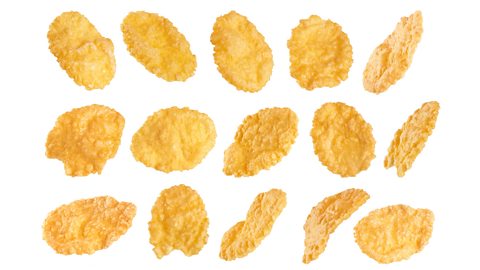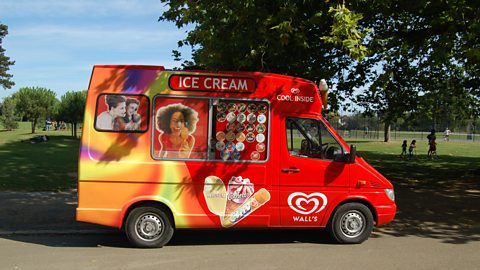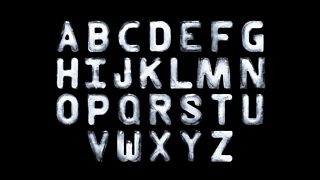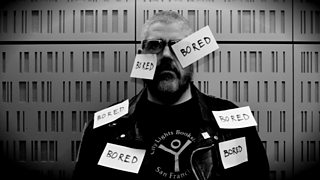Five incredibly boring things
Do you know how to categorise a cornflake, why the NATO phonetic alphabet was created, or what weight a wooden pallet can carry? If the answer’s no, you need to listen to the Boring Talks podcast. Each quick talk is packed with facts so strange and niche they probably won’t help you win a pub quiz, woo a new love, or impress guests at a dinner party, but you might just find them oddly interesting.
To mark the start of a new series, we’ve delved into some of the most noteworthy past episodes of Boring Talks and pulled out some thrillingly mundane findings...

-
![]()
The Boring Talks
Behind every boring subject is another layer of boringness you could have never imagined.
Wooden pallets
The humble pallet may not look like much, but Slate magazine has described it as ‘the single most important object in the global economy’.

As pallet-enthusiast Liam Shaw explains in episode 4, these heroic load-bearing objects are used to transport goods thousands of miles around the world, and it’s estimated there are almost 10 billion of them in circulation.
The Euro pallet – one of six designs worldwide – weighs just 25kg but can carry up to 1,500kg.
You can spot a Euro pallet from the logos it carries, while a ‘HT’ marking means the wood has been heat treated to kill off pathogens, so plant diseases can’t travel between countries.
This reduces the need for customs checks and fumigation at borders, speeding up global trade.
However, the rigid standards that control pallet quality make it hard for some countries to get in on international trade, and so counterfeit pallets are a growing global problem.
Listen now: hear about the dramatic(ish) fall-out caused by counterfeit pallets
The taxonomy of the Cornflake
In episode 24, self-confessed 'collectaholic' Anne Griffiths explains how she’s turned categorisation into an art form with her tongue-in-cheek work, 'The taxonomy of the Cornflake'.
Chosen by Grayson Perry for the , the piece features 84 meticulously selected cornflakes mounted in a glass case, each with its own serial number.
These eight-character codes start with a letter representing the brand of cornflake, followed by seven numbers relating to size, colour, texture, shape, edge style, contortion and conjoinment. In this way, F7.212100 describes a Tesco Free From cornflake that’s bigger than average, dark in colour, with holes, shaped like a teardrop, with a frilly edge, flat and not joined to any other flakes.
This system, Anne says, makes it possible to categorize up to 2,352,240 completely unique cornflakes.
Listen now: you’ll never look at your breakfast cereal the same way again

"I get very excited when I find conjoined cornflakes..."
'Collectaholic' Anne Griffiths on how she sorts through her cornflake collection.
Ice cream vans
As ex-ice cream van driver Ali Coote explains in episode 19, the biggest mystery of the cold confectionary trade is the famous ‘99’ ice cream, since no one knows why it’s called that (and it doesn’t cost 99p to buy).
It may be called a 99 because this means ‘top class’ in Italian, because 99 is top of the house in bingo, or even because the flake historically represented one of the King of Italy’s 99 soldiers.
Ali also reveals that ice cream vans’ musical chimes used to be produced by a small, wind-up metal box, but now they’re electronic. The most popular tune is O Sole Mio, and legally ice cream van drivers can’t sound the chimes for more than 12 seconds at a time. They also mustn’t play them within 50 metres of a school, hospital or place of worship, or in sight of another vehicle that’s trading.
Listen now: get tips on how to spot good ice cream before you buy

How do ice cream makers cope with unpredictable summers?
Caz Graham goes to meet a dairy farmer and ice cream producer.

"When I was in the business, you were only allowed to sound your chimes in 4 second bursts..."
Ex-ice cream van driver Ali Coote on her old ice cream vans’ musical chimes.
The NATO phonetic alphabet
As someone whose name people find hard to pronounce, Charvy Narain often uses the NATO phonetic alphabet to spell it out, as she explains in episode 23. This coding system, where each letter is represented by a distinctive word with the same initial (so that A, B, C becomes Alpha, Bravo, Charlie), was first created to enable pilots to communicate clearly over the airwaves.
Drawing on aviation codewords from before World War Two, the NATO alphabet was designed to be easily spoken and understood by airmen of all languages. The chosen words had to all exist in English, French and Spanish, and be easy to distinguish from each other. The result, following testing with people from 31 nationalities, includes unlikely words such as ‘Foxtrot’ and ‘Tango’.
-
![]()
Word of Mouth: The Alphabet
How do we come to have the letters we do?
-
![]()
In Our Time: The Alphabet
How did it develop and conquer three quarters of the globe?
Model villages
Tim Dunn, a passionate expert on Britain’s model villages, explains his interest in these ‘little works of art’ in episode five.

He believes Britain’s love for handcrafted tiny towns owes its origins to 16th-century Japanese bonzai gardens. The earliest example, he says, is probably the village and landscape at Friar’s Court in Henley, which was bought and restored by George Harrison of the Beatles.
The country’s largest model village, Bekonscot in Buckinghamshire, was created by Roland Callingham after his wife demanded he get his model train set out of the house.
In response, Callingham commissioned Britain’s biggest mini railway to be built in a neighbouring field, and enlisted local people to help him build a scaled-down town to go with it. Their creation was incredibly popular, especially with the Queen, who visited Bekonscot four times as a child.
Listen now: get lost amidst mini empires, tiny people and pun-packed shop names
More from Radio 4
-
![]()
The Boring Talks
Behind every boring subject is another layer of boringness you could have never imagined.
-
![]()
From Bourbons to Digestives: how biscuits got their names
Take a bite into the weird and wonderful world of biscuit names.
-
![]()
Eight bite-size facts about your teeth
Some fascinating facts about fangs for you to feast on.
-
![]()
Archive on 4: Being Bored: The Importance of Doing Nothing
The happily bored Phill Jupitus can show us why we still need to sometimes do nothing.






